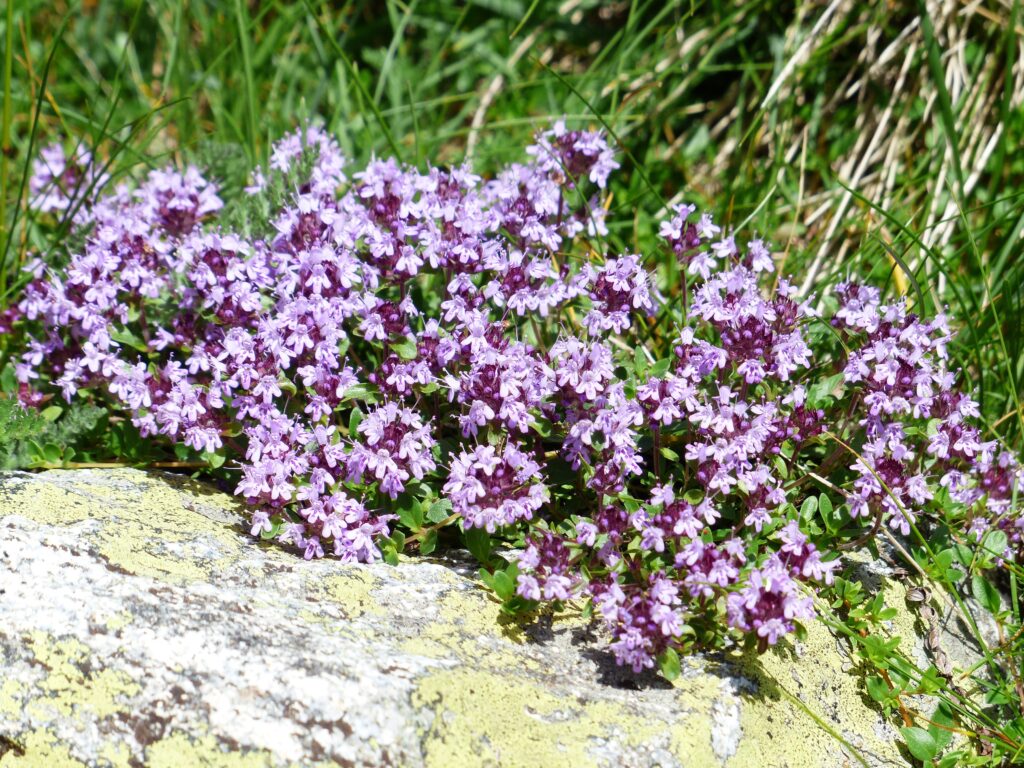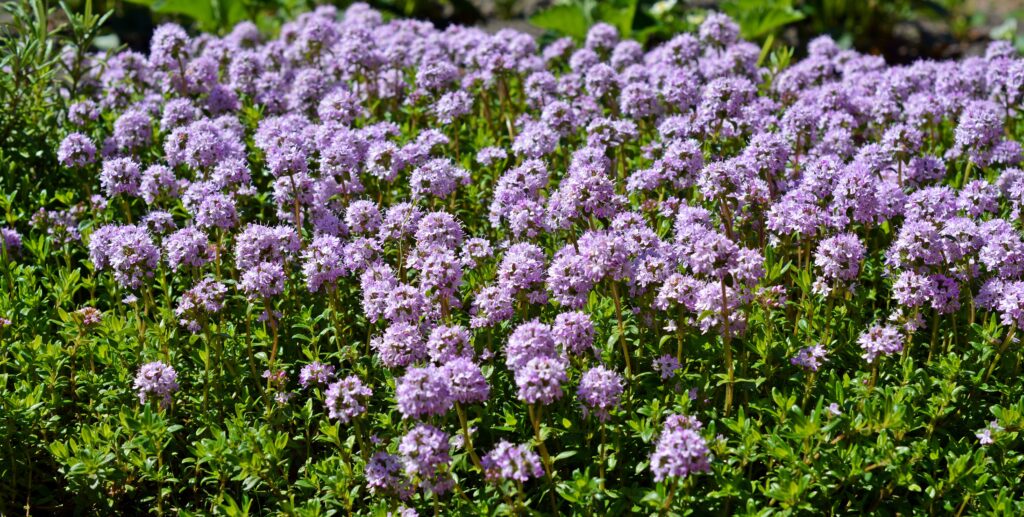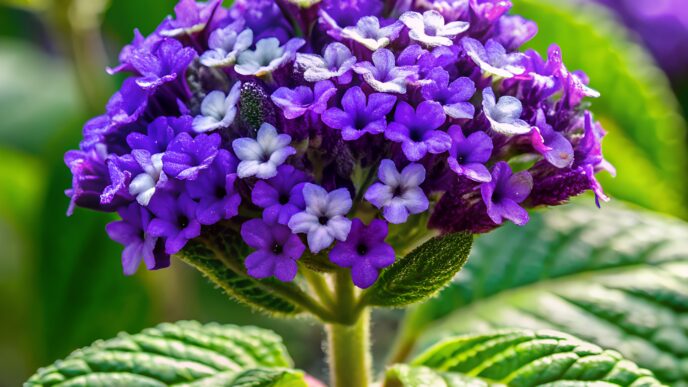Looking for a garden companion that works hard, smells heavenly, and requires minimal upkeep? Say hello to creeping thyme! This delightful herb is a multitasking marvel—perfect as a groundcover, a pollinator favorite, and even a culinary herb. Let’s dive into why creeping thyme deserves a spot (or several) in your garden.
What is Creeping Thyme?
Creeping thyme (Thymus serpyllum) is a low-growing perennial herb from the mint family. Known for its aromatic foliage and tiny, vibrant flowers, it forms dense mats that spread beautifully over time. Whether you want to fill gaps between stepping stones, create a lush green carpet, or enjoy its fragrant blooms, creeping thyme has you covered.
What is Creeping Thyme?
- Low Maintenance: Unlike a demanding houseguest, creeping thyme thrives on neglect. It’s drought-tolerant, deer-resistant, and needs only occasional trimming.
- Pollinator Paradise: Bees and butterflies adore the nectar-rich flowers. Plant it, and you’ll have a buzzing, fluttering party in your garden.
- Versatile Usage: From edging pathways to softening rock gardens, creeping thyme adapts to various landscaping styles.
- Foot Traffic Friendly: Creeping thyme isn’t just tough; it releases a pleasant aroma when walked on. Perfect for garden paths!

How to Grow Creeping Thyme
Light and Soil Requirements
Creeping thyme loves full sun. Aim for at least six hours of sunlight daily for robust growth. It’s not fussy about soil as long as it’s well-draining. Sandy or rocky soil? No problem—this herb thrives where others struggle.
Planting Tips
- Start with Seeds or Cuttings: Seeds may take longer, but they’re an economical choice. Cuttings or plugs offer quicker results.
- Spacing Matters: Space plants about 12 inches apart. Creeping thyme will spread and fill in the gaps naturally.
- Water Wisely: Water sparingly once established. Overwatering can lead to root rot—the arch-nemesis of creeping thyme.
Caring for Creeping Thyme
- Pruning: Give your thyme a light trim after flowering to maintain its shape and encourage new growth.
- Fertilizing: Forget about weekly feeding. A bit of compost in spring is all creeping thyme needs.
- Weeding: Keep weeds at bay during the early stages, as they can compete for space and nutrients.
Uses of Creeping Thyme
Ornamental Groundcover
The dense, evergreen foliage of creeping thyme is perfect for filling bare spots in your garden. It’s a favorite for softening hardscapes, like stone walls and pathways, with its charming, spilling habit.

Culinary Herb
Yes, it’s edible! Use creeping thyme leaves in soups, sauces, and marinades for a subtle, earthy flavor. Harvest sparingly to avoid over-pruning your plant.
Erosion Control
The sprawling growth of creeping thyme makes it excellent for stabilizing slopes and preventing soil erosion. Beauty and function? Win-win!
Popular Varieties of Creeping Thyme
- Red Creeping Thyme: With deep red flowers, it’s a standout in any garden.
- Elfin Thyme: This ultra-dwarf variety is ideal for small spaces and fairy gardens.
- Woolly Thyme: Featuring soft, fuzzy leaves, it’s perfect for adding texture.
- Lemon Thyme: Bonus! This variety offers a zesty citrus fragrance.
Common Issues and Solutions
- Root Rot: Avoid overwatering and ensure good drainage.
- Weed Invasion: Mulch around the plants to suppress weeds.
- Pests: Creeping thyme’s natural oils repel most pests, but occasional aphid or spider mite infestations can occur. Spray with insecticidal soap if needed.
Final Thoughts
Whether you’re creating a fragrant pathway, boosting pollinator traffic, or adding edible charm to your garden, creeping thyme is a versatile and rewarding choice. With minimal effort, you’ll enjoy its lush, aromatic presence for years to come. So, what are you waiting for? Get creeping!















